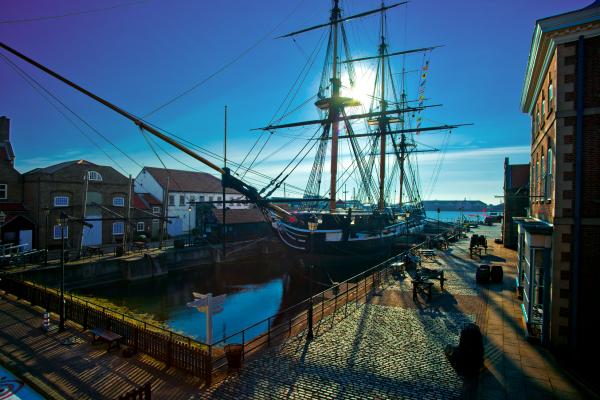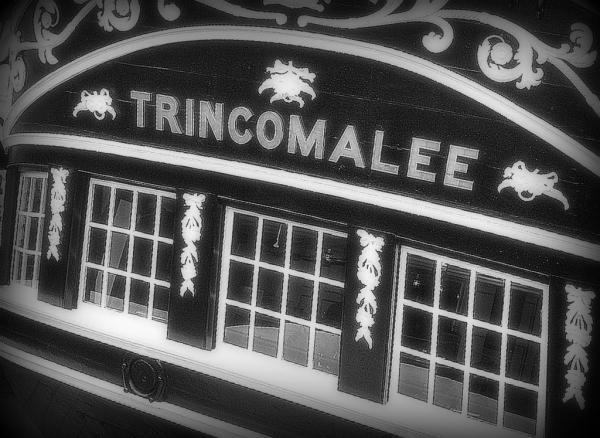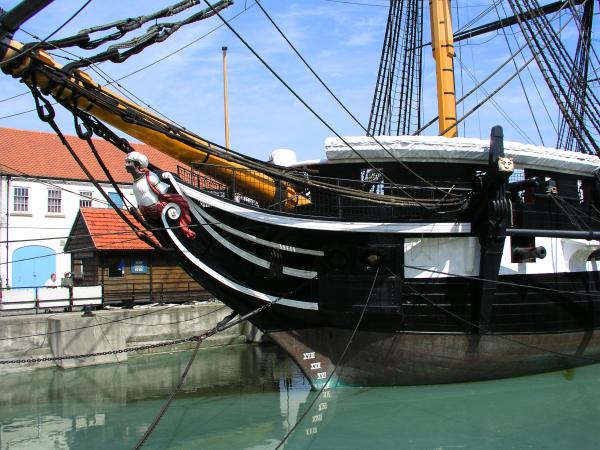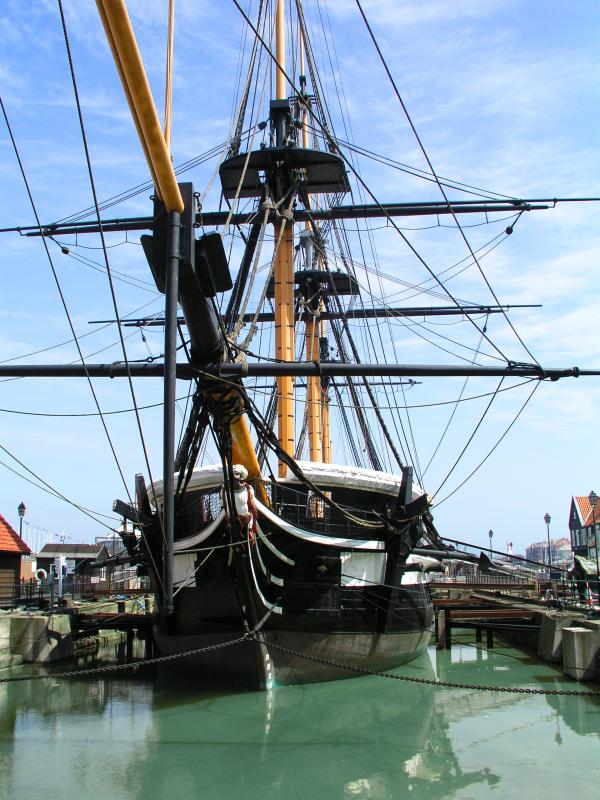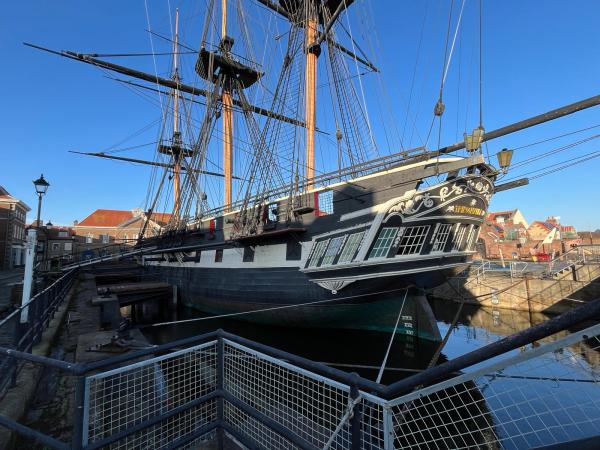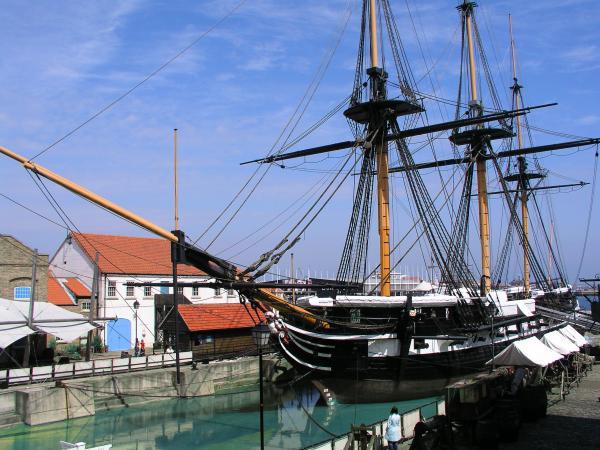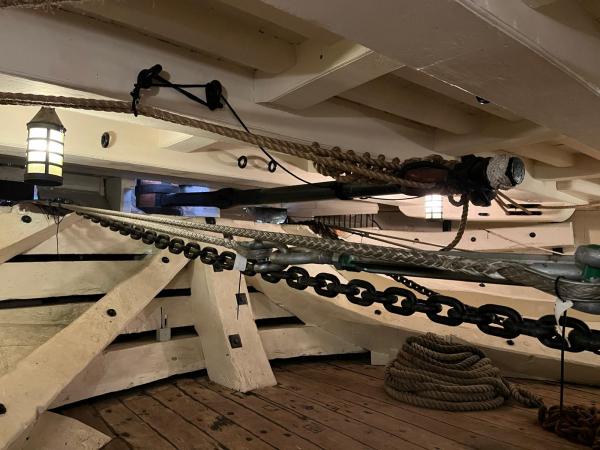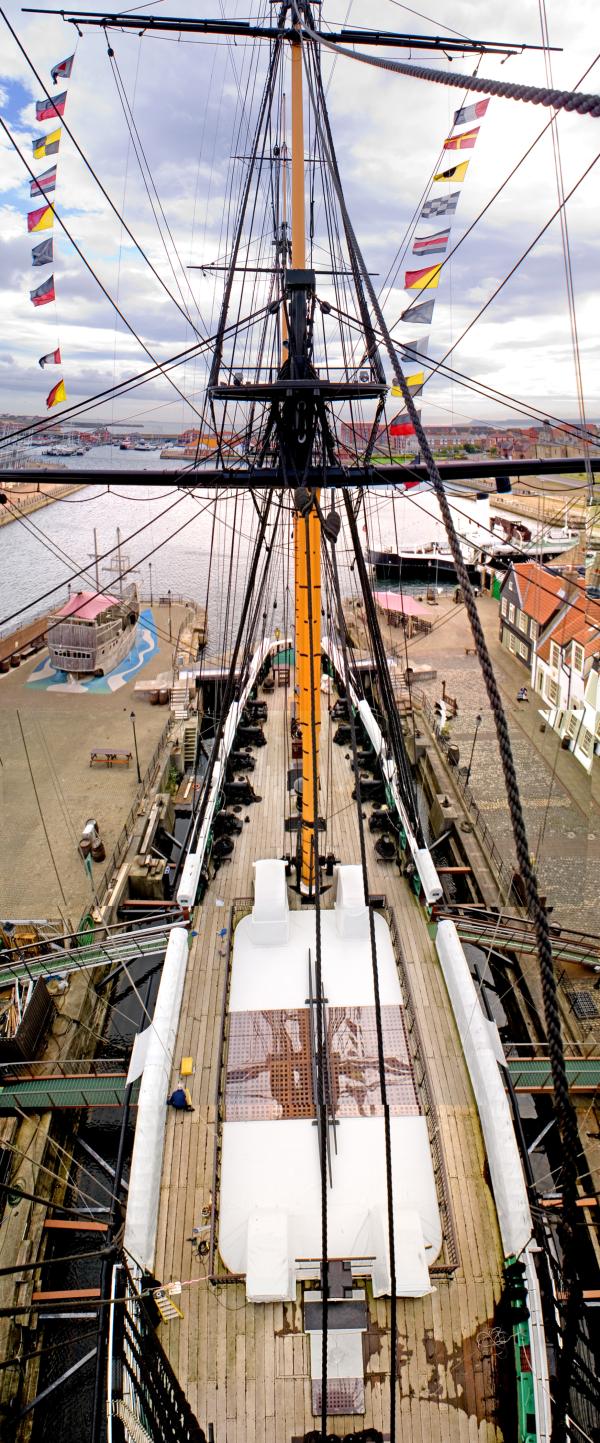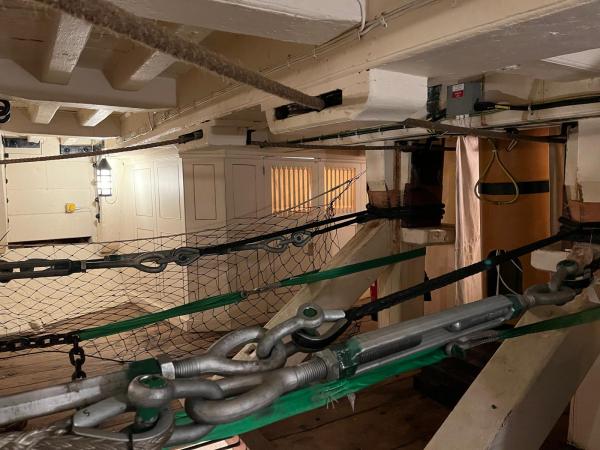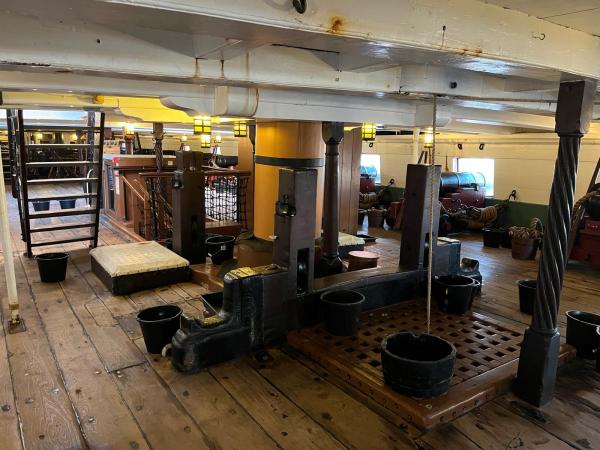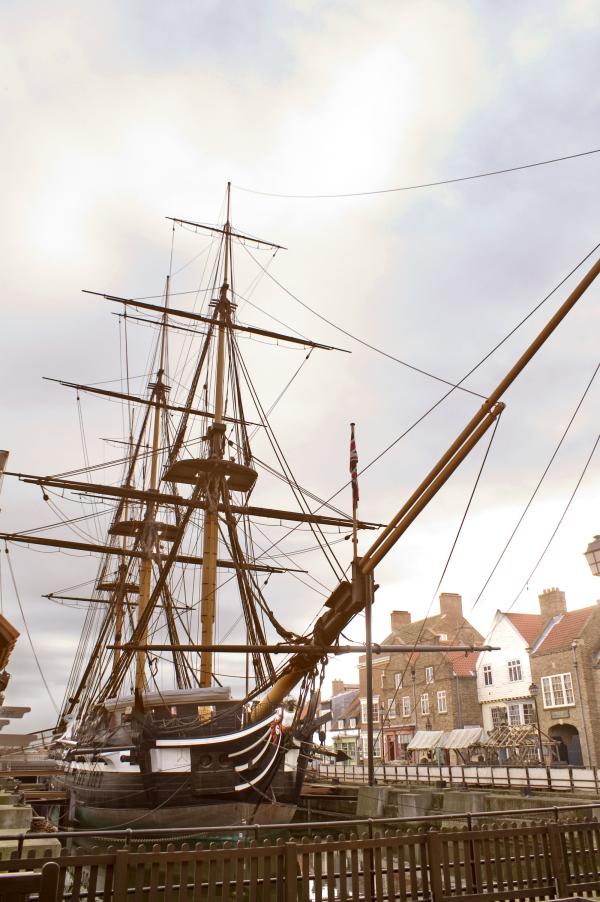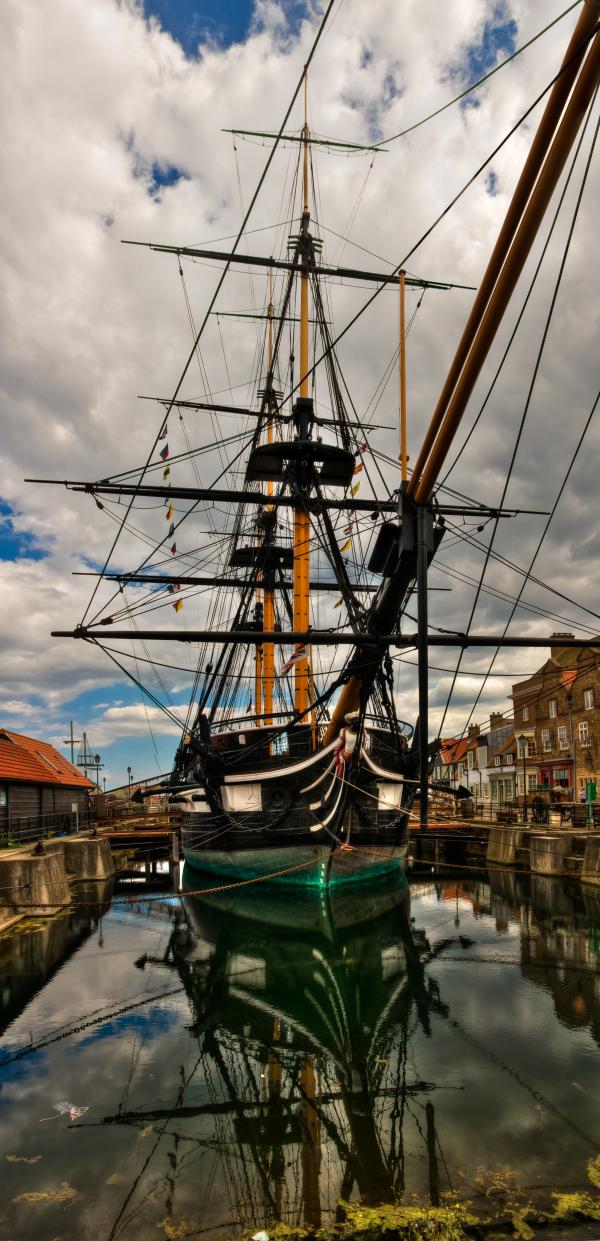

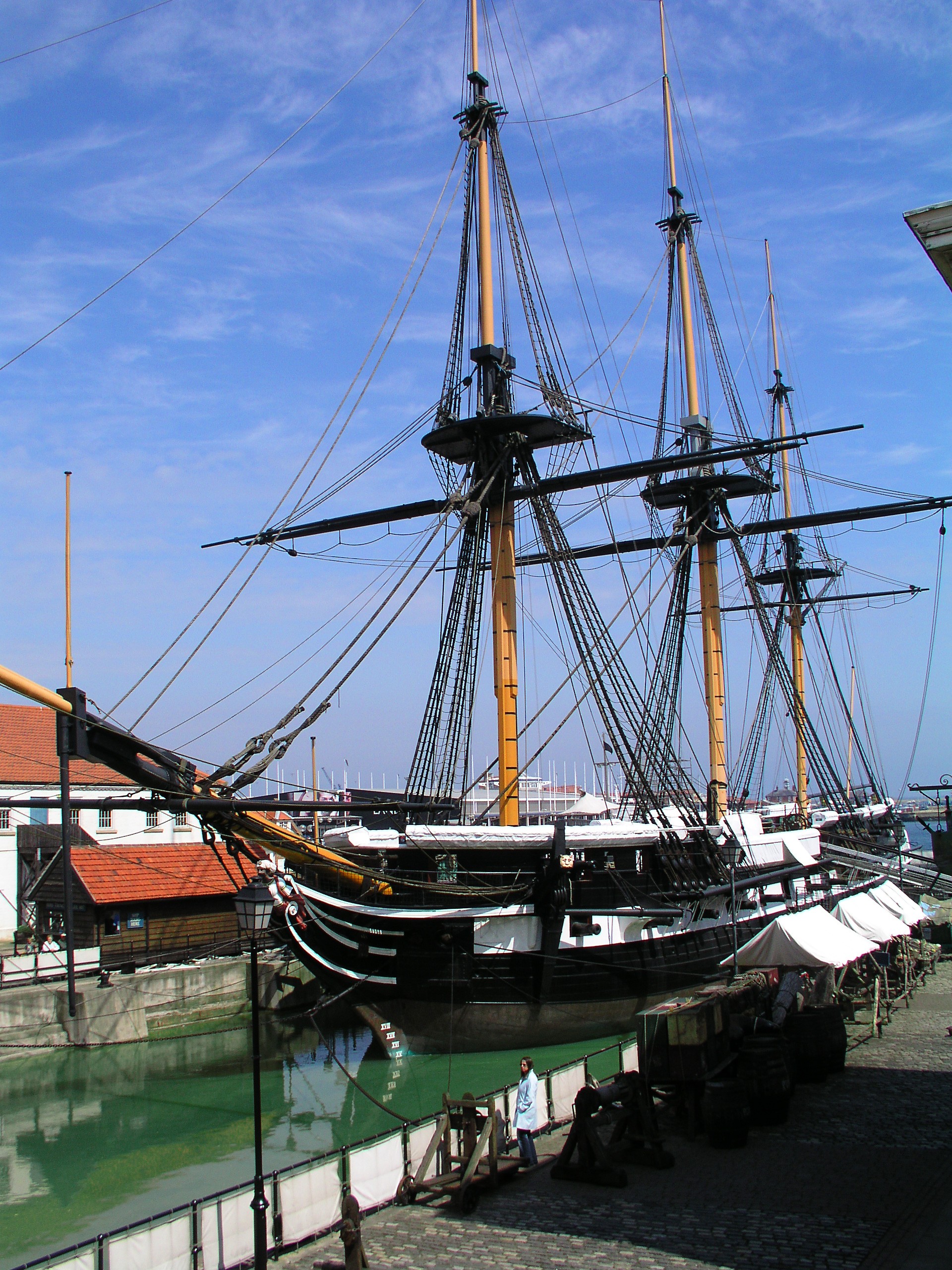
Previous names
- 1817 - 1901 Trincomalee
- 1902 - 1992 Foudroyant
Details
Construction
Dimensions
History
Laid down in Honourable East India Company's shipyard in Bombay in 1816, together with her sister ship HMS AMPHIRITE and launched on 12 October 1817, TRINCOMALEE was one of 47 38-gun Leda class frigates built between 1800 and 1830. Nearly all of them were of oak, but the two Bombay ships were made of Malabar teak.
Her building had been delayed by the plans being lost on HMS JAVA which was sunk by USS CONSTITUTION, a second set of plans not arriving in India until two years later.
When TRINCOMLAEE reached Britain in 1819, she went straight into 'ordinary' for 26 years in Portsmouth harbour. In 1845 she was commissioned for service in areas which lacked adequate coaling stations for the new steam vessels. Her stern was modified to an elliptical style, and she was reclassified as a 26-gun Corvette.
In 1847 she served in the West Indies and then in the Eastern Campaign of the Crimean War. After patrols in the Pacific she was again paid off into ordinary in 1857. Three years later she became a Drill Ship for Royal Naval Volunteers. Between 1860 and 1897 she was moored, mast-less and with deckhouses in Sunderland then West Hartlepool and finally in Southampton. She was sold to shipbreakers in 1897.
The philanthropist G Wheatly Cobb bought HMS TRINCOMLAEE to replace the training ship FOUDROYANT which had foundered two years earlier on its way to take up a similar role, and renamed the ship FOUDROYANT. She was moored in Falmouth and later at Milford Haven and finally at Portsmouth. On Cobb's death on 1932 she was managed by the IMPLACABLE Committee of the Society for Nautical Research.
During the war the vessel was taken over for the training of Sea Cadets. In 1947 she was given back to her owners and became an adventure training base for Sea Cadets, Sea rangers, Sea Scouts and other youth groups. From 1957 to 1987 she was moored at the entrance to Haslar Creek, Portsmouth. The Foudroyant Trust later moved her further north to avoid her being rammed by submarines. Training was discontinued due to the poor state of the ship and insufficient trainees. In 1987 the Foudroyant Trust transferred the ship to Hartlepool where a private yard had just paid off after restoring HMS WARRIOR 1860.
In 1990 the Trincomalee was restored under the Trincomalee Trust. In 2016 the National Museum of the Royal Navy took responsibility for oversight of Trincomalee.
Key dates
-
1816
Built by the Honourable East India Company's shipyard in Bombay (now Mumbai) as a Leda Class Frigate.
-
1817-1819
Escorted back to England by HMS FOWEY calling at Trincomalee in Ceylon
-
1819
Vessel decommissioned and placed ’in ordinary
-
1829
Dry-docked and re-coppered
-
1845
Vessel placed on reserve and modified to become a 26 gun Corvette
-
1847
Re-commissioned for service in the North American and West Indies Station mainly to police the outlawed Slave Trade but also assisting British Consuls in protecting British interests in Haiti and Cuba
-
1850
Crew paid off and vessel again put ‘in ordinary’
-
1852
Re-commissioned, sent to join the Pacific Squadron and charged with defending British interests
-
1854
War declared against Russia and vessel involved in operations to seek and destroy Russian frigates
-
1856
Returned to ‘showing the flag’ duties in the Pacific
-
1857
Paid off into ’ordinary’, her active service with the Fleet at an end
-
1860-1897
Served as a training vessel to train teenage Naval Volunteers in Sunderland, West Hartlepool and Southampton
-
1897
Sold to shipbreakers in Portsmouth but bought by Mr Wheatly Cobb to replace HMS FOUDROYANT lost in a storm off Blackpool
-
1902
After years of repair works at Cowes the vessel was towed to Falmouth for refitting and repainting and renamed TS FOUDROYANT
-
1902-1927
Served as a training vessel to introduce teenagers to basic nautical skills
-
1932
On the death of Mr Cobb, his widow presented the ship to the Implacable Committee of the Society for Nautical Research and it was towed to Portsmouth and moored astern of HMS IMPLACABLE to provide additional accommodation for the ship’s youth tra
-
1939-1945
Both vessels commissioned as store hulks and later as accommodation vessels for ‘hostilities only’ Naval ratings
-
1947
Vessel returned to owners and became an adventure training base for Sea Cadets, Sea Rangers and Sea Scouts
-
1957-1987
Moored at Haslar Creek, Portsmouth
-
1986
Training ship role completed
-
1987
Vessel moved to Hartlepool for restoration
-
1990
Restoration started
-
1992
The Foudroyant Trust became the HMS Trincomalee Trust with HRH The Duke of Edinburgh as its patron
-
1993-2001
Restoration continued, completed and vessel opened to the public
-
2011
Vessel is now the centrepiece of the displays at the historic quay
-
2016
Ship and historic quay attraction taken on by the National Museum of the Royal Navy
Grants
-
2007-2008
The Heritage Lottery Fund awarded £120,000 towards interpretation
-
2006-2007
The Heritage Lottery Fund awarded £5,000 towards the production od a 'Deck to Deck' guide and model of the vessel
-
2005-2006
The Heritage Lottery Fund awarded £46,000 for the final costs towards the vessel's restoration
-
1997-1998
The Heritage Lottery Fund awarded £116,250 for Development Study
-
1997-1998
The Heritage Lottery Fund awarded £4,005,000 for completion of the restoration project
-
1995-1996
The Heritage Lottery Fund awarded £975,000 to complete the restoration of the vessel
-
1992
The National Heritage Memorial Fund awarded £300,000 for restoration works
Sources
Lambert, Andrew, The last of Nelson's frigates
Lambert, Andrew, Trincomalee, The last of Nelson's frigates
Lambert, Andrew, HMS Trincomalee the last of Nelson's frigates, Pitkin Pictorials, 1994
Turner, Hugh, HMS Trincomalee from the Quarterdeck, Pitkin Pictorials, 1994
Turner, Hugh, HMS Trincomalee from the Quarterdeck: A second helping, Pitkin Pictorials, 1994
Seaforth Historic Ships series, HMS Trincomalee: The frigate HMS Trincomalee 1817, Pitkin Pictorials, 1994
McIlwain, John, HMS Trincomalee, Pitkin Pictorials, 1994
Brouwer, Norman J, International Register of Historic Ships, Anthony Nelson, pp177, Edition 2, 1993
Sullivan, Dick, Old Ships, Boats and Maritime Museums, Coracle Books, 1978
Classic Boat: Royal Naval Frigate Trincomalee returns to her 1817 looks, December 2011
Thomson, A E, Naval Review: HMS Trincomalee, the ship with nine lives, pp59-61, January 1998
Vicary, P A, Ships Monthly: Two warships named Foudroyant, pp345-6, July 1972
Ships Monthly: Ships Preserved No. 9: The Foudroyant, pp31, October 1975
Ships Monthly: Wooden Walls - 1972 HMS Foudroyant, pp129-30, April Volume 7, 1972
Own this vessel?
If you are the owner of this vessel and would like to provide more details or updated information, please contact info@nationalhistoricships.org.uk

